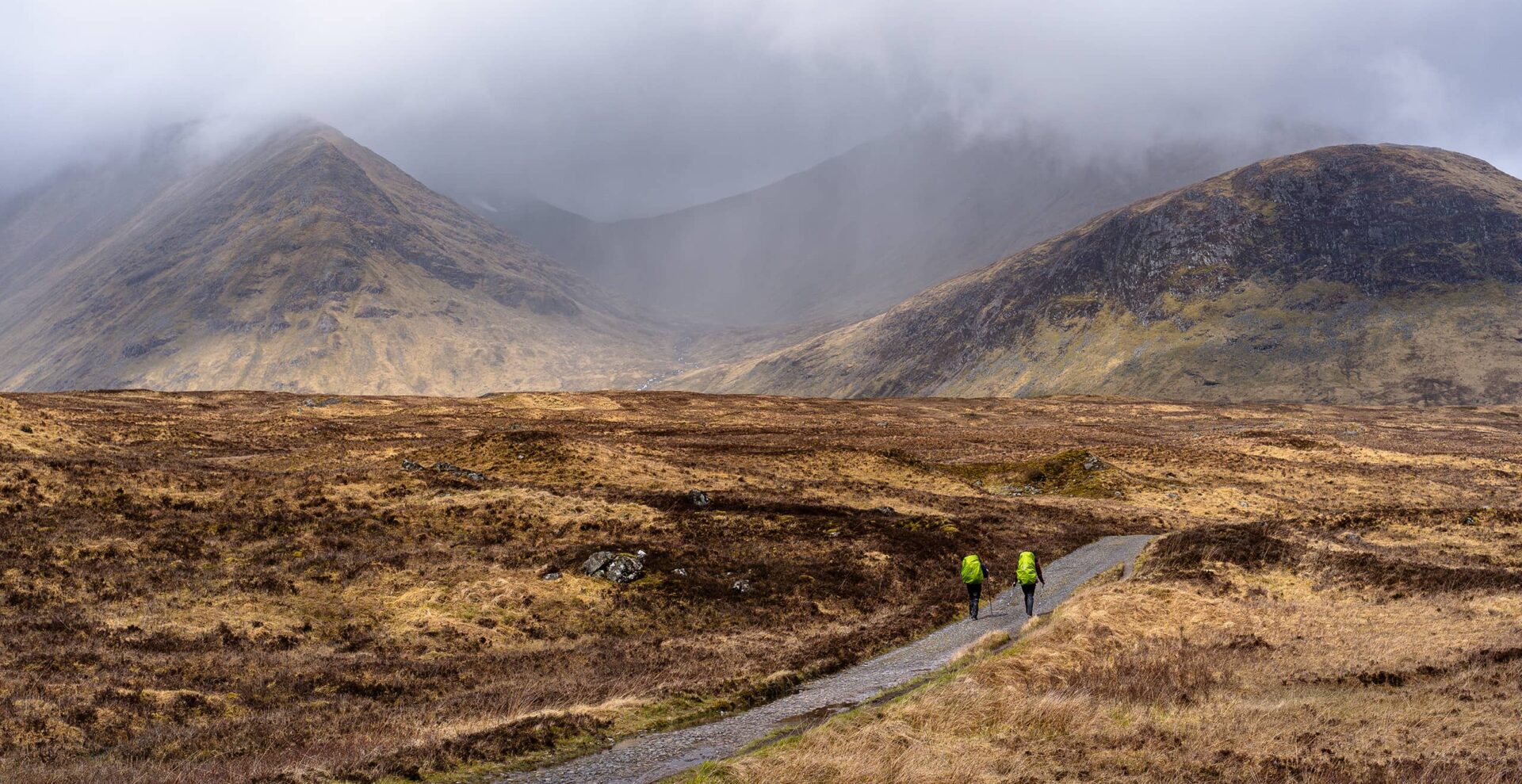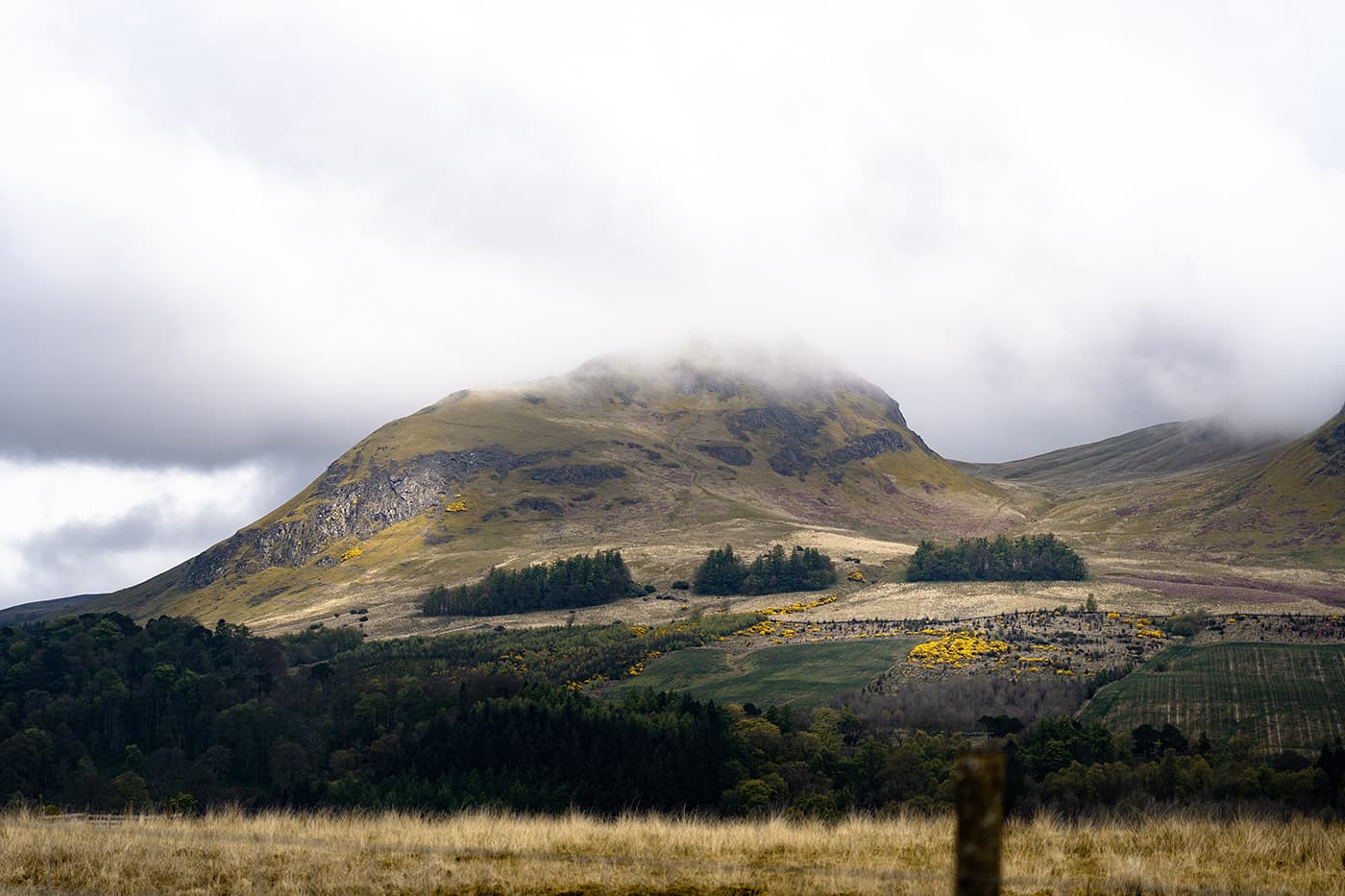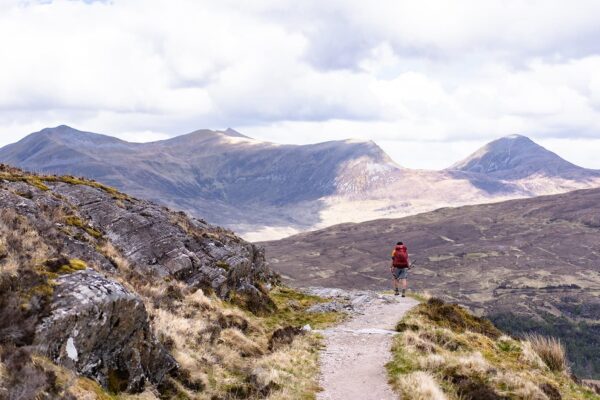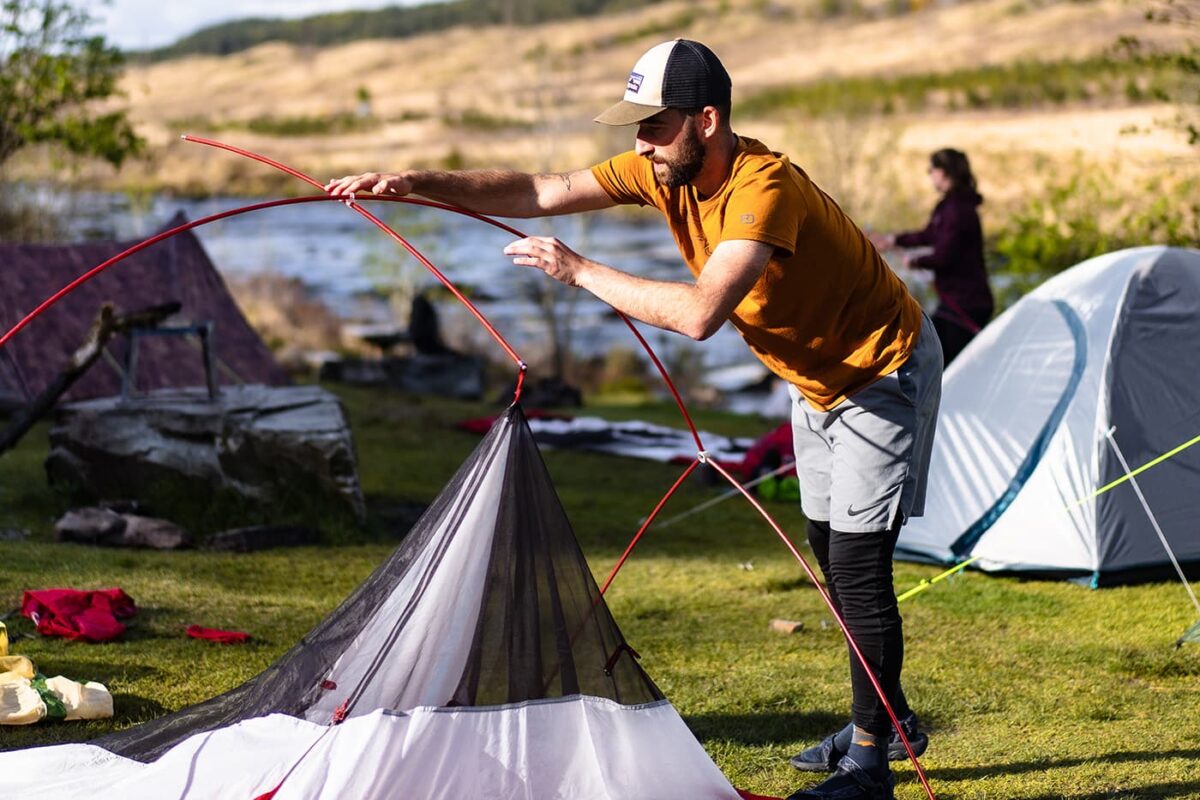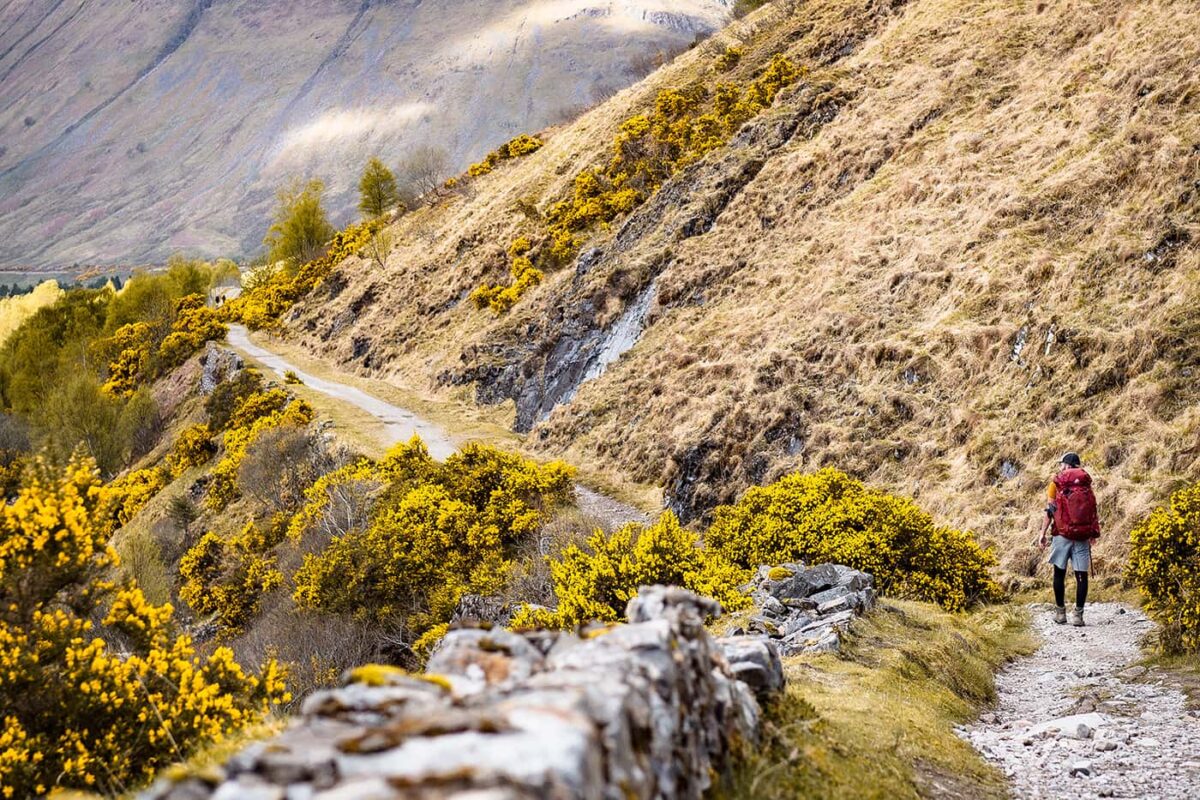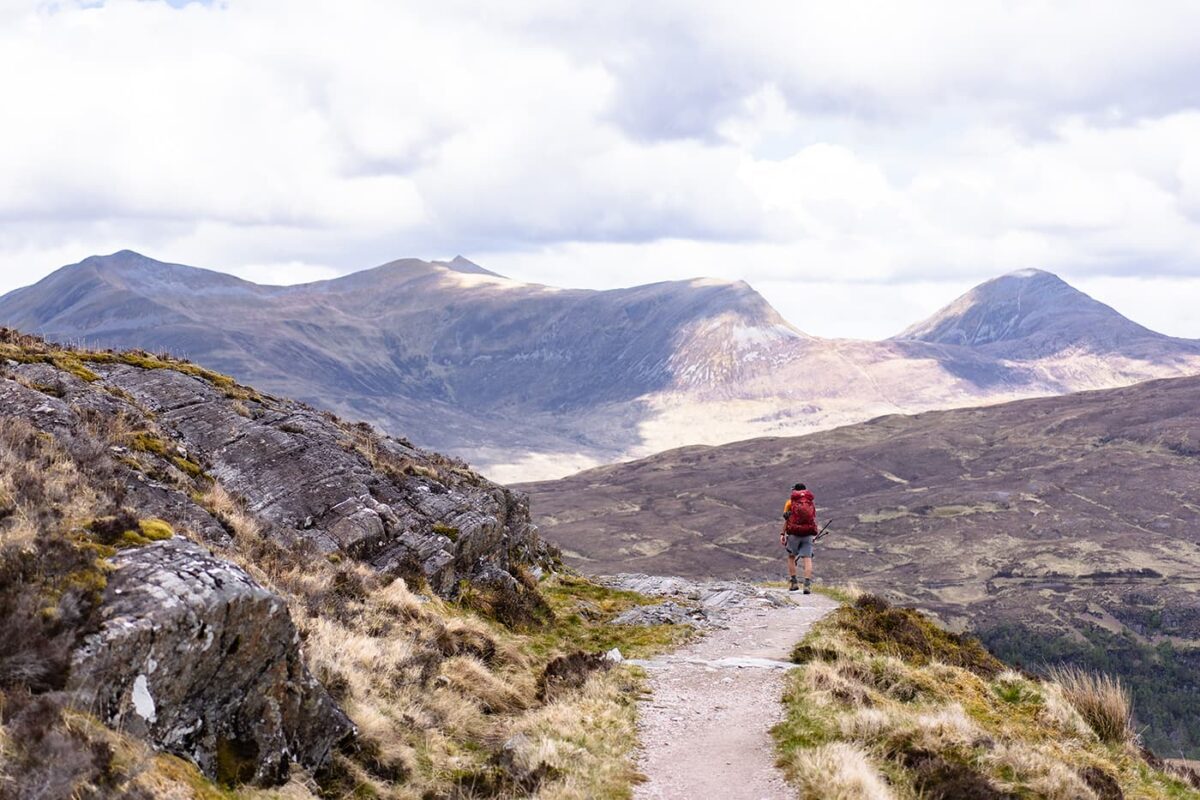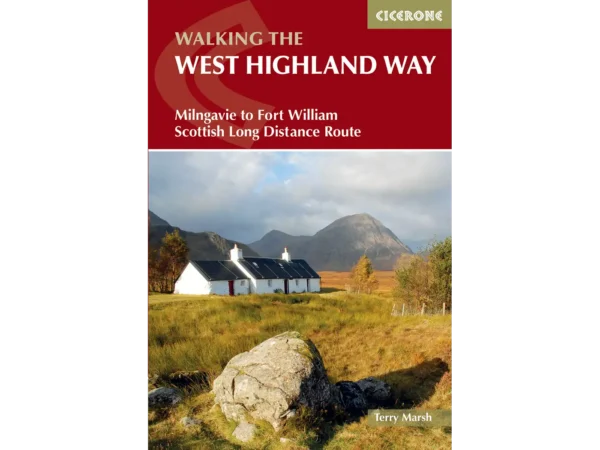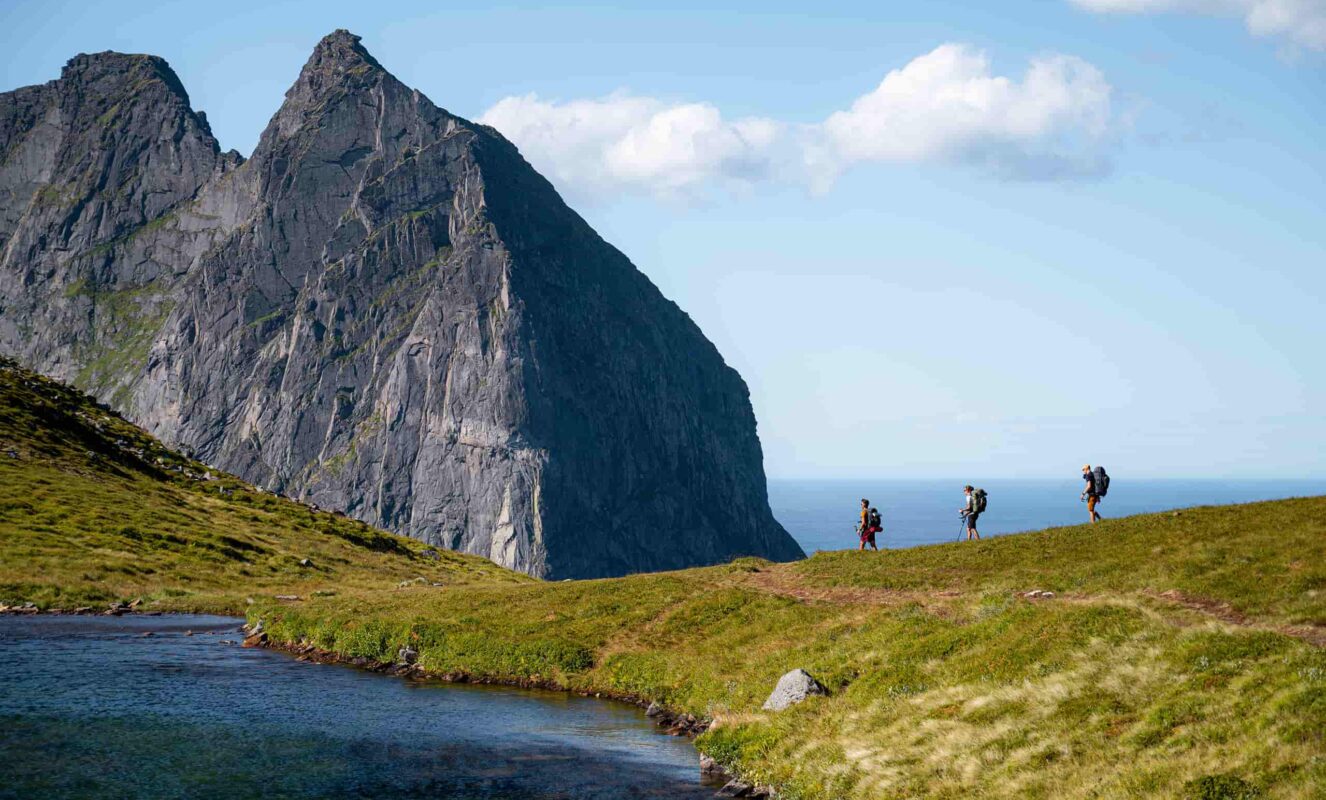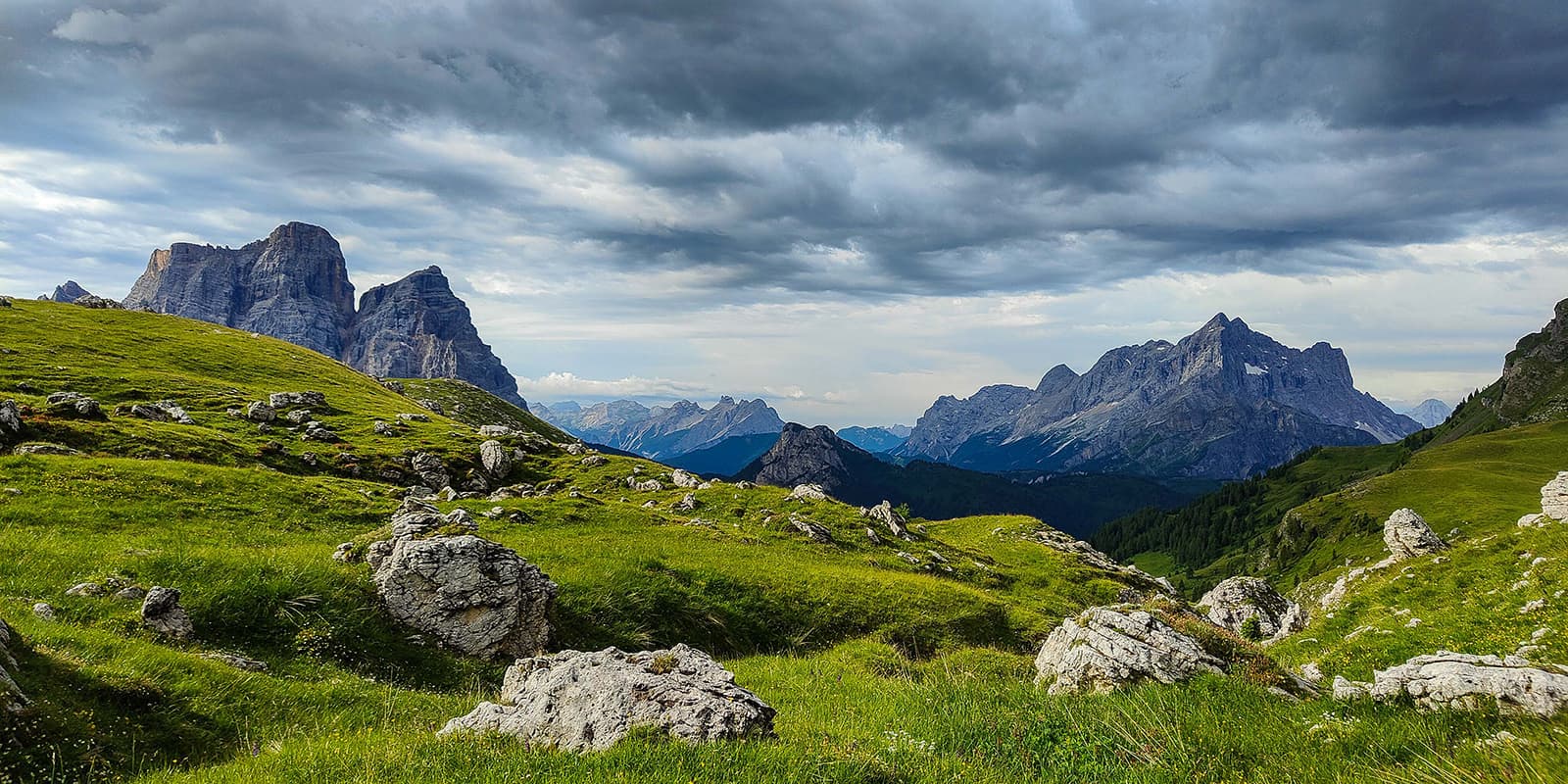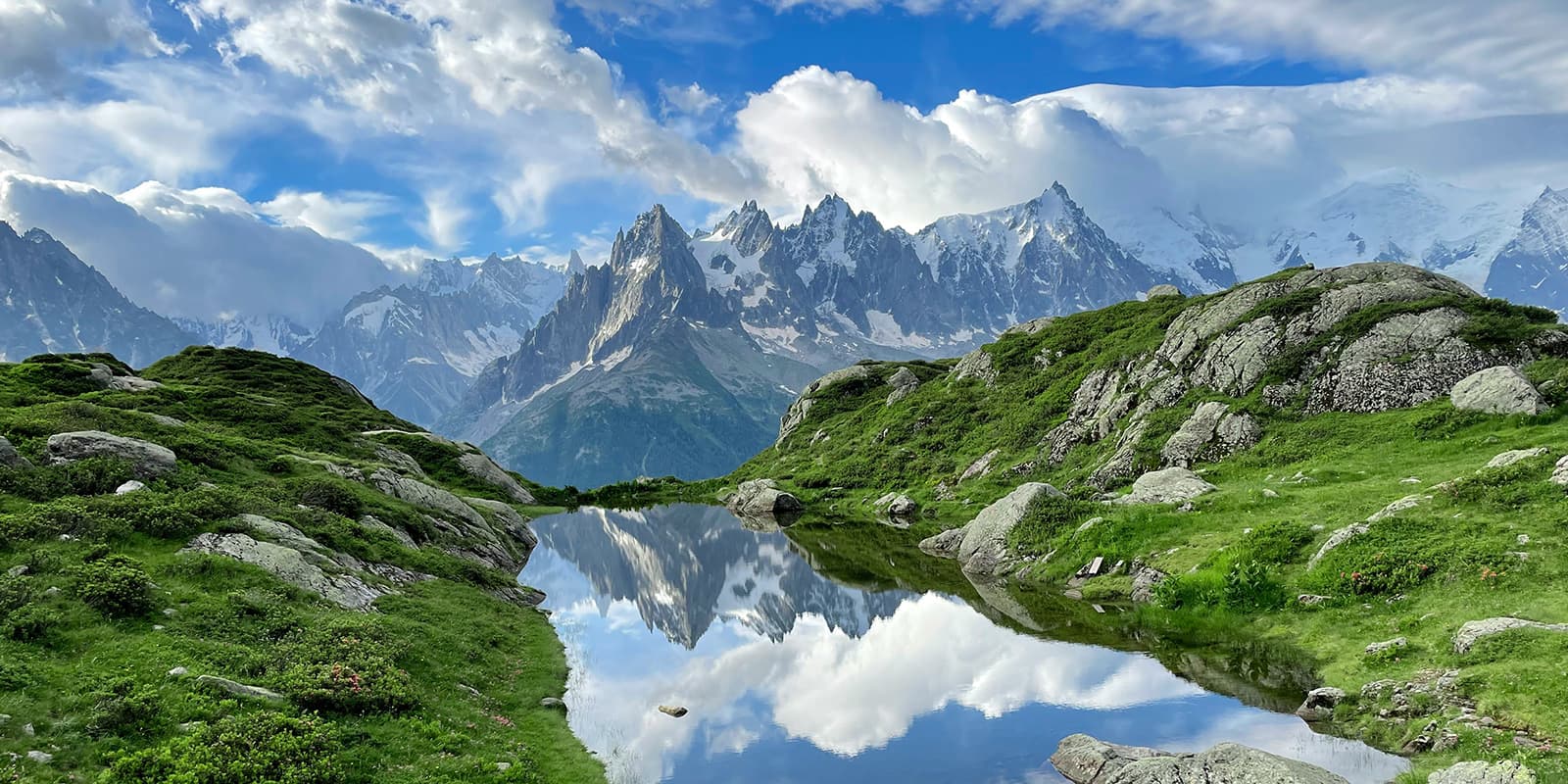The West Highland Way is undoubtedly one of Europe’s most popular long-distance hikes, and for good reason. The trail has everything to offer for both beginners and experienced hikers. Over five to seven days, the trail takes you along beautiful lochs (lakes) across the Scottish Highlands past the mountains of Glencoe. You will climb the Devil’s Staircase and camp in the wild at the most beautiful spots. Or you can opt for one of the cozy accommodations like the pubs and inns where you can relax after a long day of hiking. Along the way, you’ll encounter other hikers and locals in one of the many pubs along the route for a friendly chat.
The trail spans over 154 kilometers / 96 miles from Milngavie to Fort William. Known for its diverse landscapes, it takes hikers through the outskirts of Glasgow, along the serene banks of Loch Lomond, across the expansive wilderness of Rannoch Moor, and over the rugged terrain of Glencoe, culminating near the base of Ben Nevis, Britain’s highest peak.



